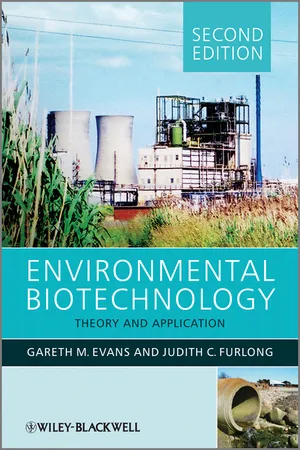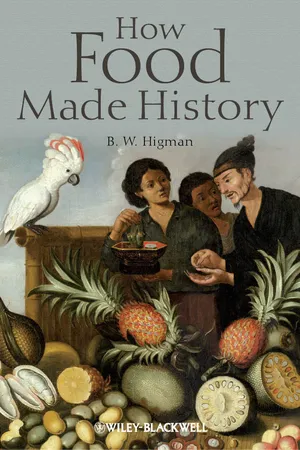Geography
Genetic Manipulation
Genetic manipulation refers to the deliberate alteration of an organism's genetic material using biotechnology. This process can involve inserting, deleting, or modifying specific genes to produce desired traits or characteristics. In the context of geography, genetic manipulation can be used in agriculture to develop crops with improved resistance to environmental stressors or to enhance productivity.
Written by Perlego with AI-assistance
Related key terms
2 Key excerpts on "Genetic Manipulation"
- eBook - ePub
Environmental Biotechnology
Theory and Application
- Gareth G. Evans, Judy Furlong(Authors)
- 2011(Publication Date)
- Wiley(Publisher)
Chapter 9 Genetic Manipulation Genes have been manipulated by man for a very long time, that is, if selective breeding, which has been practised for centuries in agriculture and elsewhere to develop desirable characteristics in domesticated animals and plants, is to be considered as manipulation, as it rightly should. Even from the early days of Gregor Mendel, the Moravian monk and pioneer of genetic analysis, plants were bred to bring out interesting, useful and sometimes unusual traits. Many of these are now lost to classical plant breeders because of divergence of strains leading to infertile hybrids. One of the joys of genetic engineering (GE) is that in some cases, ancient genes may be rescued from seed found in archaeological digs, for example and reintroduced by transfer into modern strains. It has been proposed that the exchange of genetic information between organisms in nature is considerably more commonplace than is generally imagined (Reanney, 1976; Hehemann et al., 2010) and could explain the observed rates of evolution. In bacteria, the most likely candidates for genetic transfer are plasmids and bacteriophage, and since eukaryotes lack plasmids, their most plausible vectors are eukaryotic viruses. This, of course, is in addition to DNA transfer during sexual reproduction. Existing knowledge would suggest that exchange involving a vector requires compatibility between the organism donating the genetic material, the vector involved and the recipient organism. For example, two bacteria must be able to mate for plasmid transfer to take place, or if a virus is involved as a vector, it must be able to infect both the donor and recipient cells or organisms. However, there is evidence to suggest that this view is somewhat naive and that there is considerably more opportunity for genetic exchange between all cells, prokaryotic and eukaryotic, than is popularly recognised - eBook - ePub
- B. W. Higman(Author)
- 2011(Publication Date)
- Wiley-Blackwell(Publisher)
Beginning in the 1970s, the production of recombinant DNA, the artificial sequence created by the combining of two DNA sequences, led quickly to the creation of genetically modified organisms, including “designer” plants and animals, and hence foods. Genetic engineering goes beyond traditional methods of hybridization or breeding and enables the making of organisms that would not have existed without human intervention, thus “outdoing evolution” (Kloppenburg, 1988: 2). This process is not disconnected from ancient domestication and in some cases knowledge of the genes in ancient or “heritage” plants and animals that contributed to early modifications is applied in modern breeding projects.Genetic engineering has roused much doubt and uncertainty about the risks involved in creating transgenic organisms, as well as posing new questions in science, law, ethics, and society. Genetically modified (GM) crops have many advantages for agricultural productivity but equally create concern about their implications for food chains. Formerly, it was assumed that known foods were safe to ingest, however much they had been manipulated, because they were made up of natural products. Genetic engineering challenged this assumption, locating such “Frankenstein foods” among the drugs categories which had much longer been regarded as potentially dangerous. Cloned sheep seemed bad enough to many, while fluorescent pigs created alarming visions of green ham and eggs. Color and shape are the first things observed by consumers of food, the first clues that something may not be safe to eat (Lawrence, 2007). The first commercially marketed food derived from transgenic animals was salmon, with the principal advantage of accelerated growth in aquaculture rather than any visible physical oddity.An understanding of genomic sequences, beginning in the late twentieth century, permitted cloning for favored agronomic characteristics, and this also involves a search for superior qualities in wild relatives and unimproved varieties which had not been selected in the long process of artificial domestication. It is expected that this process can lead to the development of new crops and novel varieties. For example, although classic breeding techniques enabled the improvement of sorghum and millet, the most significant cereal crops of Africa, recombinant DNA technology allows the transfer of genes between species, thus creating crops with superior protein quality, minerals, and vitamins, delivering greater nutrition and digestibility. Transgenic maize can be manipulated to improve its content of lysine, an essential amino acid that occurs in proteins and is important in human nutrition, but is naturally the most limited in cereal seeds. Similarly, the gene that controls the development of thick long cobs of naked corn in maize could be applied through engineering to produce wheat and barley “on the cob” (Goodwin, 2009; Doebley, Gaut and Smith, 2006: 1319; O’Kennedy, Grootboom and Shewry, 2006).
Learn about this page
Index pages curate the most relevant extracts from our library of academic textbooks. They’ve been created using an in-house natural language model (NLM), each adding context and meaning to key research topics.

